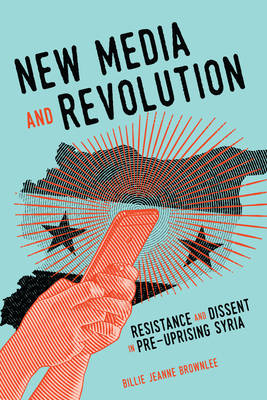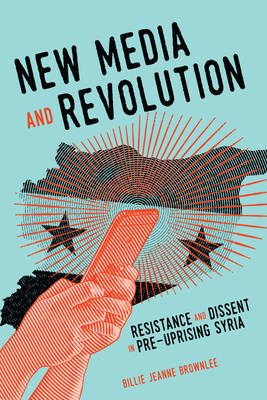
- Afhalen na 1 uur in een winkel met voorraad
- Gratis thuislevering in België vanaf € 30
- Ruim aanbod met 7 miljoen producten
- Afhalen na 1 uur in een winkel met voorraad
- Gratis thuislevering in België vanaf € 30
- Ruim aanbod met 7 miljoen producten
Zoeken
€ 41,45
+ 82 punten
Omschrijving
The Arab Spring did not arise out of nowhere. It was the physical manifestation of more than a decade of new media diffusion, use, and experimentation that empowered ordinary people during their everyday lives. In this book, Billie Jeanne Brownlee offers a refreshing insight into the way new media can facilitate a culture of resistance and dissent in authoritarian states. Investigating the root causes of the Syrian uprising of 2011, New Media and Revolution shows how acts of online resistance prepared the ground for better-organised street mobilisation. The book interprets the uprising not as the start of Syria's social mobilisation but as a shift from online to offline contestation, and from localised and hidden practices of digital dissent to tangible mass street protests. Brownlee goes beyond the common dichotomy that frames new media as either a deus ex machina or a means of expression to demonstrate that, in Syria, media was a nontraditional institution that enabled resistance to digitally manifest and gestate below, within, and parallel to formal institutions of power. To refute the idea that the population of Syria was largely apathetic and apolitical prior to the uprising, Brownlee explains that social media and technology created camouflaged geographies and spaces where individuals could protest without being detected. Challenging the myth of authoritarian stability, New Media and Revolution uncovers the dynamics of grassroots resistance blossoming under the radar of ordinary politics.
Specificaties
Betrokkenen
- Auteur(s):
- Uitgeverij:
Inhoud
- Aantal bladzijden:
- 296
- Taal:
- Engels
- Reeks:
- Reeksnummer:
- nr. 1
Eigenschappen
- Productcode (EAN):
- 9780228000891
- Verschijningsdatum:
- 16/07/2020
- Uitvoering:
- Paperback
- Formaat:
- Trade paperback (VS)
- Afmetingen:
- 150 mm x 226 mm
- Gewicht:
- 408 g

Alleen bij Standaard Boekhandel
+ 82 punten op je klantenkaart van Standaard Boekhandel
Beoordelingen
We publiceren alleen reviews die voldoen aan de voorwaarden voor reviews. Bekijk onze voorwaarden voor reviews.











